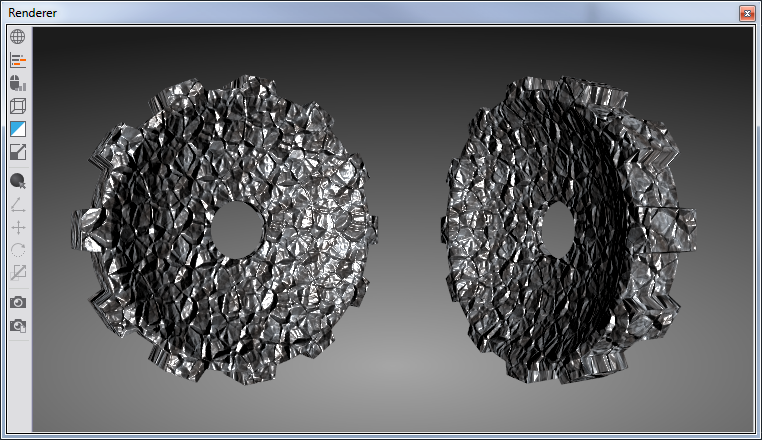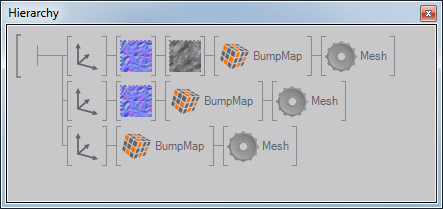BumpMap
 | BumpMap | This node applies a bump-map texture to a geometry to gain the effect of a highly tessellated (bumpy) surface. |
The BumpMap shader node simulates a bumpy structure on a geometry's surface. A so called normal map is used as a replacement for the geometry's vertex normals and lighting computation is done per fragment and not per vertex. This lets an object appear to have much more geometric detail than there really is. The strongest limitation of this technique is that the silhouette of an object is not changed (this would require actually moving vertices) and the illusion of much higher detail gets lost in those regions.

There are two common ways how normal maps are created: Some normal maps represent the structure of a material (wood, stone, ...) and can be used on any object. Recent games however often use normal maps to reduce the geometric complexity of objects. A high detailed model is created first and then stripped down to a low-resolution version. The difference between both surfaces is then baked into a normal map, capturing the shading details of the high-resolution model. This kind of normal map is custom tailored for a specific object.
The BumpMap shader will use the Texture assigned to the first texture stage as its normal map. The easiest way to achieve this is by ensuring there is no Texture Node before the one that assigns the normal map. Additionally, all textures must be placed before the Shader node in the Tree Hierarchy! If no BumpMap texture is present, an internal default texture is used. The following hierarchy shows different valid combinations:

This shader only works with Directional and Point Light.
The intensity of the bump effect can be controlled by the BumpValue property.